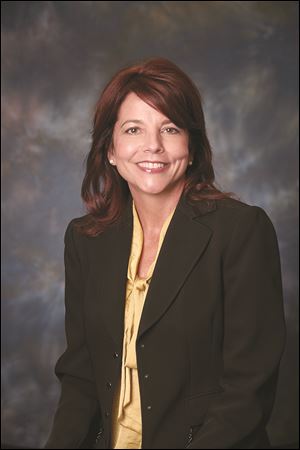
Reducing your risk of breast cancer
10/28/2013
Dr. Anita Antoniolli
You’ve seen the pink ribbons, but have you really heard the message?
National Breast Cancer Awareness Month, the annual international health campaign to promote an understanding of the disease, is almost over. As a surgeon who treats breast cancer patients on a daily basis, I hope that you’ve scheduled your annual mammogram, done your self-breast exam, and called your doctor for your yearly clinical breast exam.
I encourage all women and men to consider breast care to be an important part of their overall health and well-being.
Early detection saves lives
Getting regular screening tests can’t be stressed enough. This is the best way to lower the risk of dying from breast cancer.
Screening tests can find breast cancer early, when the chances for survival are the highest. The recommendation for starting annual mammograms is age 40, followed by an annual exam.
For women with a family history of breast or ovarian cancer, mammogram screenings should begin even earlier and risk assessments should be discussed with your healthcare provider, to determine whether testing for mutation of the BRCA 1 or BRCA 2 gene is needed.
Women who have inherited mutations in these genes face a much higher risk of developing breast cancer and ovarian cancer compared with the general population. Some women – because of their family history, a genetic tendency, or certain other factors – should be screened with an MRI in addition to mammograms.
Prevention starts with healthy habits
While some risk factors, such as a family history, can’t be changed, there are lifestyle changes you can make to help lower your risk. Breast cancer prevention starts with healthy habits.
Yearly mammograms. A mammogram is recommended starting at age 40 and should continue annually for as long as a woman is in good health.
Clinical breast exams. A clinical breast exam (CBE) is a physical exam done by a health-care provider as part of your regular medical check-up. It is recommended about every three years for women in their 20s and 30s and every year for women 40 and over. Your provider should carefully feel your breasts for any changes or abnormalities. He/she should visually check your breasts while you are sitting up and physically examine your breasts while you are lying down. It is important for you to ask for a CBE if one is not offered at your check-up.
Control your weight. Being overweight or obese increases the risk of breast cancer. This is especially true if obesity occurs later in life, particularly after menopause.
Don’t smoke. Evidence suggests a link between smoking and breast cancer risk, particularly in premenopausal women.
Eat healthy foods. A healthy diet can help you maintain a healthy weight, a key factor in breast cancer prevention.
Limit alcohol. The more alcohol you drink the greater your risk of developing breast cancer. If you choose to drink alcohol, limit yourself to no more than one drink a day.
Be physically active. Physical activity can help you maintain a healthy weight, which, in turn, helps prevent breast cancer. For most healthy adults, at least 150 minutes a week of moderate aerobic activity or 75 minutes of vigorous aerobic activity weekly, plus strength training at least twice a week is recommended.
Limit the dose and duration of hormone replacement therapy. Combination hormone replacement therapy for more than five to 10 years increases the risk of breast cancer. If you’re taking hormone replacement therapy for menopausal symptoms, ask your doctor about other options. You may be able to manage your symptoms with nonhormonal therapies.
Avoid exposure to radiation. Medical-imaging methods, such as computerized tomography (CT), use high doses of radiation, which have been linked with breast cancer risk. Ask your doctor about reducing your exposure by having such tests only when absolutely necessary. Inquire about having your CT on a low-dose, high-definition CT scanner. Together with special software technology, exams can be tailored to maximize quality with the lowest radiation dose possible.
Breast-feed. Studies are indicating that breast-feeding may play a role in breast cancer prevention. The longer you breast-feed, the greater the protective effect.
What else can you do?
Most women know that the most recognized symptom of breast cancer is a lump or mass in the breast tissue. Some other common breast cancer signs include:
■ Skin changes, such as swelling, redness, thickening or dimpling.
■ An increase in size or shape of the breast or breasts.
■ Changes in the appearance of one or both nipples.
■ Nipple discharge that is bloody or clear and sticky.
■ Any unexplained breast pain.
Dr. Anita Antoniolli is the director of breast care surgery for ProMedica Flower Hospital. Her expertise is benign and malignant breast conditions, breast surgery, and breast care for women and men.